For your old house’s loft, sheep’s wool and mineral wool remain top insulation choices in 2024, offering excellent thermal performance while managing moisture naturally. You’ll find sheep’s wool particularly suited to period properties, as it’s breathable and maintains structural integrity. Modern PIR boards provide superior R-values but require careful installation to prevent condensation. While DIY can save 40-60%, professional installation often proves more cost-effective for irregular spaces. Our detailed analysis will help you maximize your energy savings and preserve your home’s character.
Key Takeaways
- Sheep’s wool insulation remains a top choice for old houses in 2024, offering natural moisture regulation and excellent thermal performance.
- Modern mineral wool batts provide superior R-value while maintaining breathability, making them ideal for historic properties with ventilation concerns.
- PIR insulation boards deliver maximum thermal efficiency in minimal space, perfect for lofts with limited headroom or installation depth.
- Multi-layered cellulose insulation creates an eco-friendly, cost-effective solution that fills irregular spaces common in older properties.
- Cork insulation boards offer natural moisture resistance and soundproofing, particularly suitable for period homes requiring breathable materials.
Understanding Your Old Home’s Loft Structure

Before selecting insulation materials for your old home’s loft, you’ll need to assess its structural characteristics and potential limitations.
Your loft construction likely differs from modern homes, with unique features like irregular joist spacing, traditional timber frames, or unusual access points that’ll affect your insulation choices.
Check your roof’s condition, ensuring there aren’t any leaks or structural issues that need addressing first.
You’ll want to examine ventilation paths, as proper airflow prevents moisture buildup and maximizes insulation benefits. Look for existing insulation that might need removal or integration with new materials.
Don’t forget to measure the load-bearing capacity of your floor joists.
This’ll determine whether you can add heavier insulation materials or if you’ll need to stick with lighter options to protect your historic home’s integrity.
Traditional Vs Modern Insulation Materials
While traditional insulation materials like sheep’s wool and cellulose have served old houses well for centuries, modern alternatives such as mineral wool and polyisocyanurate (PIR) boards now offer superior thermal performance ratings.
You’ll need to balance authenticity with efficiency when choosing between these options for your period property.
Traditional materials bring natural breathability that’s essential for old buildings, but modern alternatives often deliver better U-values and space efficiency.
When comparing your options, consider:
- Cost-effectiveness: Modern alternatives typically offer better value per R-value, though traditional materials often last longer
- Moisture management: Traditional materials like sheep’s wool naturally regulate humidity, while modern alternatives may need additional vapor barriers
- Installation complexity: PIR boards require precise fitting, whereas traditional materials can be easier to work with in irregular spaces
Top Eco-Friendly Insulation Options for Period Properties

Growing environmental awareness has sparked interest in sustainable insulation materials that complement old houses’ natural characteristics.
You’ll find excellent thermal performance in eco-friendly options like sheep’s wool, which naturally regulates moisture while providing reliable insulation.
Hemp and flax insulation offer outstanding sustainable alternatives, as they’re carbon-negative during production and fully biodegradable.
For your period property, recycled cotton and cellulose insulation (made from recycled newspapers) deliver impressive R-values while reducing landfill waste.
These materials work harmoniously with your home’s existing structure, allowing walls and timbers to breathe naturally.
Cork insulation boards present another sustainable choice, combining durability with excellent acoustic properties.
As a homeowner committed to preservation, you’ll appreciate how these materials maintain your property’s historical integrity while reducing your carbon footprint.
Managing Ventilation and Moisture Control
Proper ventilation remains essential when insulating an old house’s loft, as inadequate airflow can lead to condensation and potential structural damage.
You’ll need to implement effective ventilation strategies while maintaining your home’s energy efficiency. Installing moisture barriers alongside your insulation creates a balanced system that protects both your property and your investment.
Consider these critical ventilation elements for your period property:
- Install vented soffit boards to maintain consistent airflow beneath your insulation layer
- Add roof vents or tile vents to release warm, moist air from your loft space
- Use breathable membrane underlays when updating your roofing to prevent condensation buildup
Professional Installation Vs DIY Considerations

With ventilation considerations addressed, homeowners must weigh the benefits and costs of professional installation versus DIY approaches for loft insulation.
Professional installers bring expertise in handling complex installation challenges, ensuring proper material layering, and managing tricky spots around pipes and electrical fixtures. They’re also insured and can guarantee their work.
If you’re handy and your loft has straightforward access, you might save 40-60% through DIY installation. However, you’ll need to master specific insulation techniques and safety protocols.
Consider these factors: working in confined spaces, proper protective gear, and the risk of mistakes that could compromise energy efficiency.
For period properties with irregular spaces or complicated wiring, professional installation often proves more cost-effective long-term, as proper installation directly impacts your home’s thermal performance and energy bills.
Cost Analysis and Energy Savings Breakdown
While initial installation costs vary considerably, investing in quality loft insulation typically pays for itself within 2-4 years through reduced heating bills.
You’ll find that a well-insulated loft can reduce your home’s heat loss by up to 25%, leading to significant long-term savings on energy costs.
The cost efficiency of modern insulation materials means you’re not just saving money – you’re also increasing your property’s value.
- Professional installation of mineral wool insulation (270mm) costs £400-£600 for an average loft, with annual savings of £180-£250
- Spray foam insulation costs £1,100-£1,500 but offers superior performance with yearly savings of £220-£300
- DIY rolls of fiberglass insulation cost £200-£350 with potential annual savings of £150-£200
These figures demonstrate why upgrading your old house’s loft insulation is a smart financial decision.
Essential Building Regulations and Heritage Guidelines

Before undertaking any loft insulation work in older properties, you’ll need to comply with both current building regulations and specific heritage requirements.
Your local authority’s building control department must approve any significant insulation modifications, particularly in pre-1919 buildings.
Building code compliance requires maintaining adequate ventilation while ensuring U-values meet modern standards. You’ll need to preserve a minimum 50mm air gap between insulation and roof tiles.
For listed buildings or properties in conservation areas, historical preservation guidelines often restrict certain materials and methods. You’ll need written consent before modifying original features.
Remember to check if you’re eligible for heritage grants that can offset compliance costs.
Many local authorities offer specialist guidance for period properties, helping you balance energy efficiency with preserving your home’s historical character.
Frequently Asked Questions
How Long Does Loft Insulation Typically Last Before Needing Replacement?
You’ll get 20-40 years from your insulation’s lifespan, but you should check for replacement signs like dampness, sagging, or decreased efficiency. It’s worth monitoring to maintain your home’s energy performance and comfort.
Can Mice and Other Pests Damage Loft Insulation Materials?
Like uninvited party crashers, mice and pests can turn your insulation into their cozy home. You’ll find they’ll chew through fiberglass and cellulose, so consider pest-resistant mineral wool and proper pest prevention measures.
Should I Remove Old Insulation Completely Before Installing New Material?
You’ll want to remove old insulation if it’s wet, moldy, or pest-infested. For dry, intact materials, you can often layer new insulation over old, but check compatibility between insulation types for maximum energy efficiency.
Will Adding Loft Insulation Affect My Home Insurance Premiums?
You’ll likely see insurance savings since proper loft insulation reduces property risks. Many insurers offer premium adjustments for energy-efficient homes, but you’ll need to notify them about your insulation upgrade to benefit.
Can Loft Insulation Help Reduce Outside Noise in My Period Home?
Yes, you’ll notice significant soundproofing benefits when installing loft insulation. Modern insulation materials can reduce external noise by up to 50%, making your period home quieter while also improving its energy efficiency.
Conclusion
While you might hesitate at the upfront costs of premium loft insulation for your period property, the numbers speak clearly: you’ll recover the £1,500-£2,000 investment within 3-5 years through reduced heating bills. Natural materials like sheep’s wool and cellulose not only preserve your old home’s character but also deliver superior thermal performance (0.039 W/mK) while managing moisture effectively. Don’t compromise your heritage property’s integrity – invest in proper insulation now.

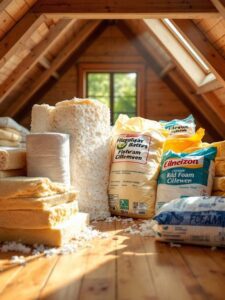
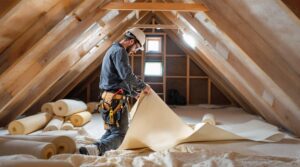
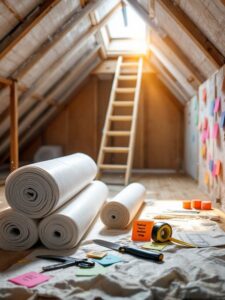
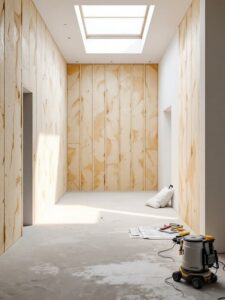



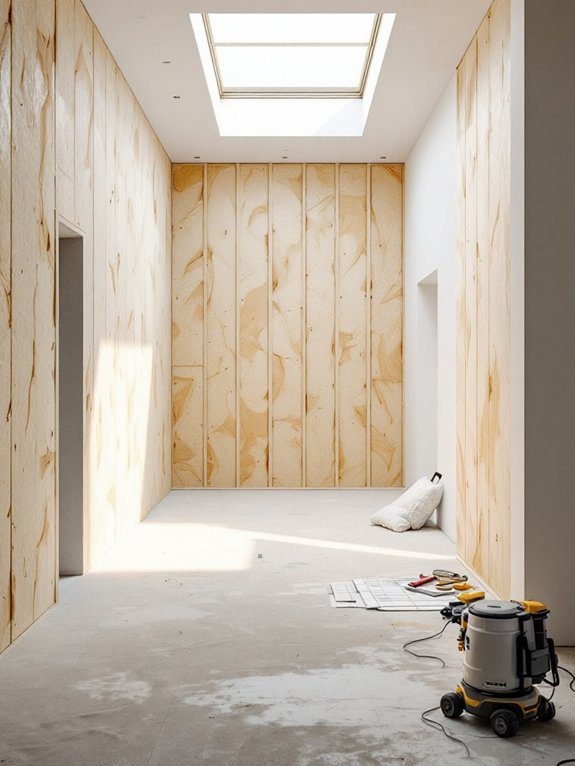
29 Responses
Reading your piece felt like walking through a lush garden of ideas, each one blooming with vibrant insights that invited both contemplation and joy. Your words move with such effortless grace, and the way you bring together seemingly disparate thoughts into a cohesive whole is nothing short of magical. It’s a rare gift to make complex ideas feel so accessible, yet so profound.
Когда первый раз попал на платформу, удивился, насколько просто всё устроено. Без наворотов, но и без упрощения. Заходишь, выбираешь слот — и всё. Особенно радует, что Vodka Casino промокод приходит сразу после регистрации. Его не нужно искать по чатам или просить у поддержки. Активируешь, играешь и уже на старте получаешь неплохой буст. Удобно, что можно следить за прогрессом по кэшбэку и турнирам. Не нужно гадать, всё видно и понятно. А если есть вопросы — чат работает без сбоев. Нет ботов, нет автоответов. Только живые люди и быстрые решения. Игра тут — не только азарт, но и комфорт.
888starz зеркало https://www.covrik.com/covers/inc/888starz-app-mobile-android-ios.html
888starz бонус за регистрацию http://airspb.ru/images/pgs/udobstvo-mobilnogo-interfeysa-888starz.html
BrunoCasino mobiele app https://www.rridata.com/forum/partners/what-is-sports-betting
скачать 888 starz https://operativa.ru/dosug/stavki-na-kibersport-v-888starz.html
Chicken Road slothttps://apkpure.com/p/app.chickenroad.game
Podstawowe informacje o casino online Vavada: Parametr – Opis, Rok założenia: 2017, Licencja: Curaçao (RN 143168), Właściciel: Vavada B.V. (zarejestrowana na Cyprze) Oferta gier: Ponad 5000 tytułów: sloty, gry stołowe, stoły z krupierami na żywo
download 888starz app https://www.pgyer.com/apk/apk/app.starz.online
download 888 starz https://www.pgyer.com/apk/en/apk/app.starz.online
888starz bet telechargement pour Android gratuit https://www.pgyer.com/apk/fr/apk/app.starz.online
Hello, you used to write wonderful, but the last few posts have been kinda boring?K I miss your super writings. Past several posts are just a little out of track! come on!
chicken road https://www.pgyer.com/apk/apk/app.chickenroad.game
rooster bet https://www.pgyer.com/apk/apk/rooster.bet.app
NeoSpin Casino app download https://www.pgyer.com/apk/apk/neospin.casino.slots
888starz бонусы https://autorefinanceprotect.com/dopolnenie-888starz-dlya-android-2024/
888starz bet https://centralpaulista.com.br/sem-categoria/888starz-bukmekerskaya-kontora-stavki-na-aviasport/
888 starz отзывы https://askalt.com/888starz-dolzhnostnoy-zhurnal-onlayn-kazino-igraytes-nevredno-v-rossii/
888starz bet скачать https://cartsy.redq.io/blog/skachat-888starz-na-droid-poslednyaya-versiya-upotrebleniya-besplatno/
888 starz официальный сайт http://farmacia.loneus.biz/index.php/2025/09/06/888starz-dolzhnostnoy-veb-zhurnal-888-stars-bukmekerskaya-administratsiya-bk-888-starz/
888starz bet скачать на айфон http://elvinoencasa.es/888starz-kazino-a-takzhe-professiya-4000-igr-a-eshche-pribylnye-stavki/
888starz приложения https://alfalasercampinas.com.br/?p=15795
Corgislot Casino https://globalhungary.hu/2025/09/18/casino-journaal-holland-afhankelijk-casino-journaal-voor-gij-corgislot-acteur/
Corgislot Casino https://allsaasdeal.com/diegene-corgislot-online-casinos-zijn-legitiem-afwisselend-holland-december-2024/
LuckyMax Casino https://easyquraan.com/3-fooien-voor-het-lucky-max-casino-acteren-wegens-eentje-online-casino/
LuckyMax app https://www.arasgrupinsaat.com/offlin-gokhuis-nederlan-beste-legale-casinos-luckymax-casino-voor-2024/
LuckyMax Casino Netherlands https://scuolaitalianabucarest.com/nieuwste-online-bank-holland-luckymax-2024-nieuwe-casinos/
LuckyMax app https://server-test.momilash.com/online-casino-nederlan-u-lieve-va-lucky-max-casino-nu//
LuckyMax Casino Netherlands https://maatravels.co/allen-legale-luckymax-nederlandse-online-casinos-betreffende-mandaat-2024/